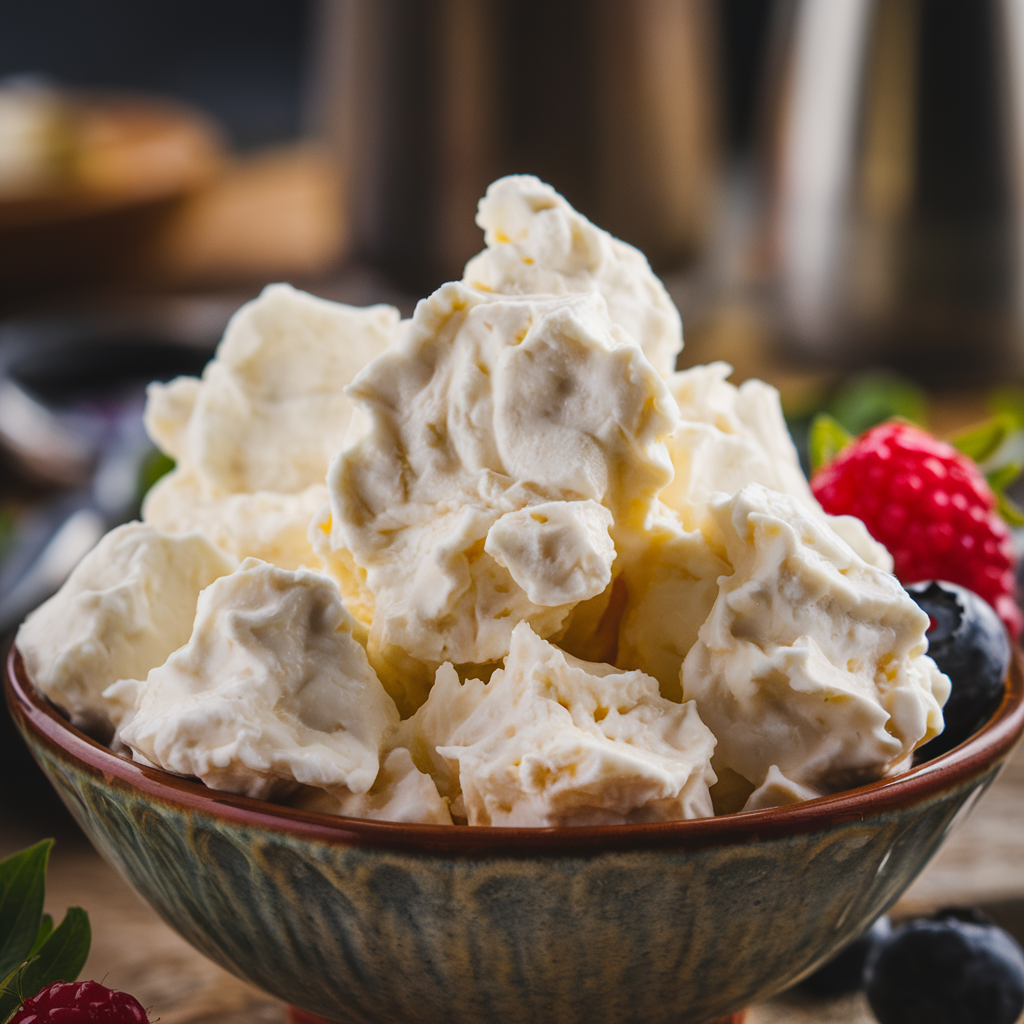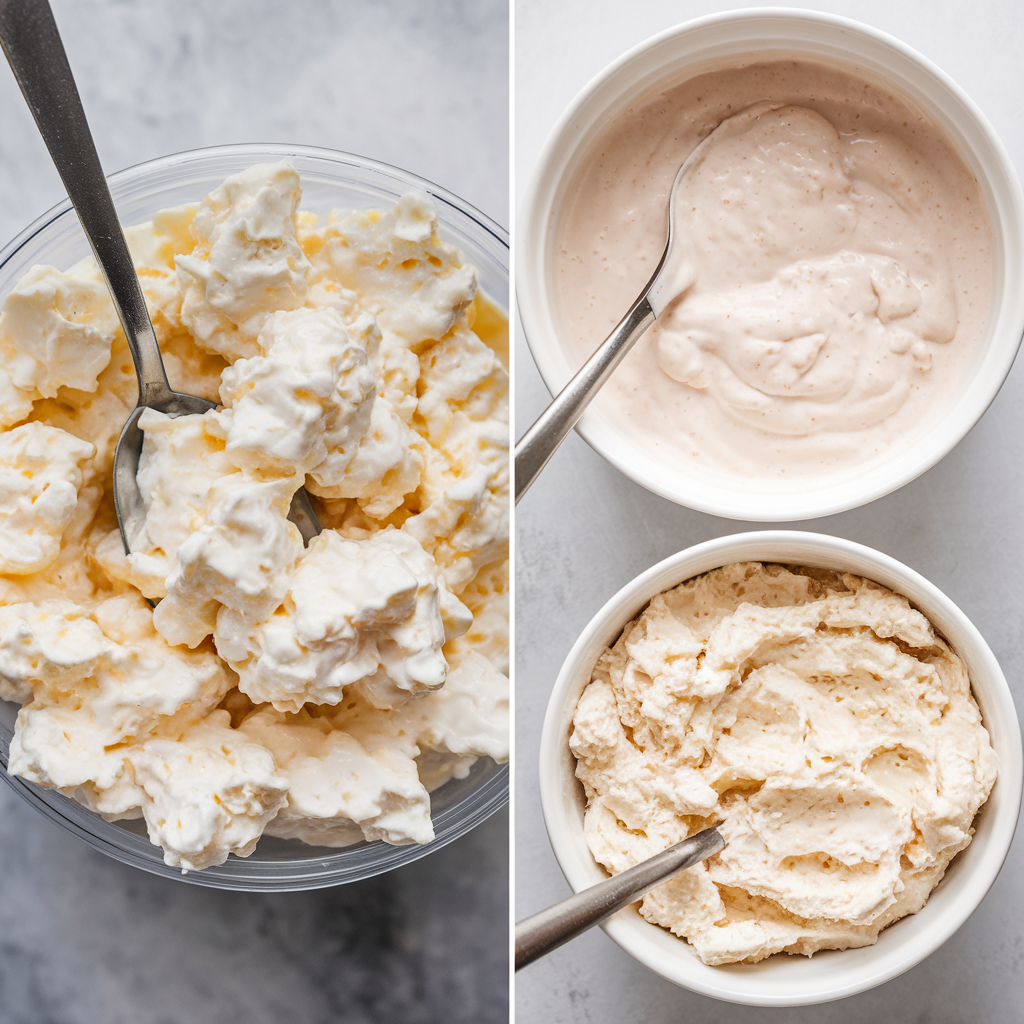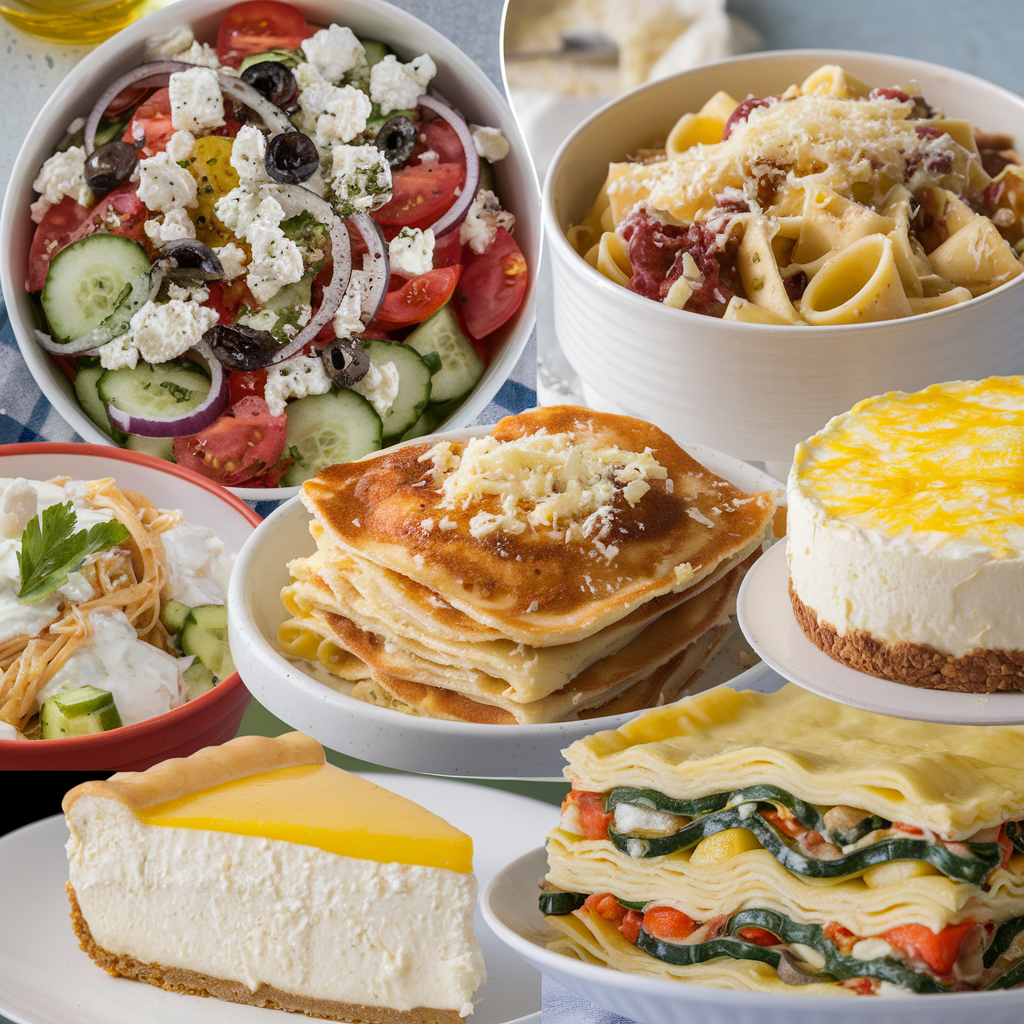Table of contents
Introduction
Cottage cheese and creamed cottage cheese are popular dairy products often used in a variety of dishes, from savory meals to sweet desserts. While they may seem similar, they have distinct differences that affect their culinary uses and nutritional benefits.
Understanding these differences can help you choose the right type of cheese for your recipes and dietary needs. In this article, we explore what sets cottage cheese and creamed cottage cheese apart, their unique characteristics, and how to use them in your cooking and baking.
What is Cottage Cheese?
Definition and Basic Characteristics

Cottage cheese is a fresh cheese curd product with a mild flavor and a creamy, slightly lumpy texture. It is made from the curds of cow’s milk and is known for its distinct curds, which can vary in size from small to large.
The curds are typically drained but not pressed, retaining some whey and moisture. Cottage cheese is available in different fat levels, including full-fat, low-fat, and fat-free varieties, making it versatile for various dietary preferences.
Nutritional Profile of Cottage Cheese
Cottage cheese is highly nutritious and a good source of protein, vitamins, and minerals. Here’s an overview of its nutritional content per 1 cup (approximately 210 grams):
- Calories: Around 206 (for full-fat) and 183 (for low-fat)
- Protein: Approximately 27 grams
- Fat: About 9 grams (for full-fat) and 2 grams (for low-fat)
- Carbohydrates: Around 6 grams
- Vitamins and Minerals: Rich in calcium, phosphorus, selenium, vitamin B12, and riboflavin.
The high protein content makes cottage cheese an excellent choice for muscle repair and growth, while its low carbohydrate content suits low-carb diets. The presence of essential vitamins and minerals supports overall health, bone health, energy production, and immune function.
What is Creamed Cottage Cheese?
Definition and Basic Characteristics

Creamed cottage cheese is a variation of regular cottage cheese, with cream or a cream dressing added to the curds. This addition gives creamed cottage cheese a richer and creamier texture compared to its regular counterpart.
The cream dressing typically consists of milk, cream, and sometimes a small amount of salt. The resulting product has a smoother and less lumpy consistency, appealing to those who prefer a creamier texture in their dairy products.
Nutritional Profile of Creamed Cottage Cheese
Creamed cottage cheese has a slightly different nutritional profile due to the added cream. Here’s an overview of its nutritional content per 1 cup (approximately 210 grams):
- Calories: Around 220
- Protein: Approximately 25 grams
- Fat: About 10 grams
- Carbohydrates: Around 6 grams
- Vitamins and Minerals: Includes calcium, phosphorus, selenium, vitamin B12, and riboflavin, similar to regular cottage cheese, but with slightly higher fat content.
The added cream increases the calorie and fat content of creamed cottage cheese, making it richer in taste and texture. Despite the higher fat content, creamed cottage cheese still offers significant health benefits, including being a good source of protein and essential nutrients that support bone health, energy production, and immune function.
Key Differences Between Cottage Cheese and Creamed Cottage Cheese

Texture and Consistency
One of the most noticeable differences between cottage cheese and creamed cottage cheese is their texture and consistency. Cottage cheese has a lumpy texture with distinct curds that vary in size from small to large. The curds are slightly chewy and separate from each other, giving cottage cheese its characteristic appearance and feel.
In contrast, creamed cottage cheese has a smoother and creamier texture due to the addition of cream or a cream dressing. The curds in creamed cottage cheese are less distinct and blend more seamlessly into the creamy base, resulting in a more uniform and rich consistency.
Flavor
The flavor profiles of cottage cheese and creamed cottage cheese also differ. Cottage cheese has a mild, slightly tangy taste that is versatile and can be paired with both sweet and savory ingredients. The natural tanginess of cottage cheese comes from the lactic acid produced during fermentation.
On the other hand, creamed cottage cheese has a richer and slightly sweeter flavor due to the addition of cream. The cream adds a subtle sweetness and enhances the overall taste, making creamed cottage cheese a favorite for those who enjoy a richer dairy product.
Nutritional Differences
The nutritional content of cottage cheese and creamed cottage cheese varies primarily due to the added cream in creamed cottage cheese. Here’s a detailed comparison of their nutritional profiles:
- Calories: Cottage cheese typically has fewer calories than creamed cottage cheese. For example, 1 cup of full-fat cottage cheese has around 206 calories, while 1 cup of creamed cottage cheese has approximately 220 calories.
- Protein: Both types are excellent sources of protein, with cottage cheese providing about 27 grams per cup and creamed cottage cheese offering around 25 grams per cup.
- Fat: The fat content is higher in creamed cottage cheese due to the added cream. Cottage cheese has about 9 grams of fat per cup (full-fat), while creamed cottage cheese contains approximately 10 grams of fat per cup.
- Carbohydrates: Both cottage cheese and creamed cottage cheese have similar carbohydrate content, around 6 grams per cup.
- Vitamins and Minerals: Both types are rich in calcium, phosphorus, selenium, vitamin B12, and riboflavin, providing essential nutrients for overall health.
The added cream in creamed cottage cheese increases its calorie and fat content, making it richer and more indulgent. However, both types of cheese offer significant health benefits and can be included in a balanced diet.
Culinary Uses

Cooking and Baking
Using Cottage Cheese in Cooking and Baking:
- Cooking: Cottage cheese is a versatile ingredient for various dishes. Add it to pasta dishes like lasagna and stuffed shells for a creamy and tangy flavor. Cottage cheese is also suitable for savory casseroles, dips, and spreads.
- Baking: In baking, cottage cheese adds moisture and a tender crumb to baked goods such as cakes, muffins, and breads. Blend it into the batter to create fluffy and moist pancakes or use it as a filling in pastries and cheesecakes.
- Recipe Example: Add cottage cheese to your pancake batter for a protein-packed breakfast, or use it as a filling for spinach and cheese stuffed shells for a hearty dinner.
Using Creamed Cottage Cheese in Cooking and Baking:
- Cooking: Creamed cottage cheese works well in creamy sauces, soups, and dips due to its smooth texture. Add it to mashed potatoes for extra creaminess or use it as a base for creamy salad dressings.
- Baking: In baking, creamed cottage cheese enhances recipes that call for a richer texture and flavor. It’s perfect for making creamy cheesecakes, rich brownies, and fluffy cheesecakes.
- Recipe Example: Use creamed cottage cheese to make a luscious cheesecake or stir it into a creamy pasta sauce for added richness and flavor.
Pairings and Toppings
Pairings and Toppings for Cottage Cheese:
- Sweet Pairings: Cottage cheese pairs well with fruits like berries, peaches, and pineapple. Drizzle with honey or maple syrup for a sweet treat. Add granola or nuts for extra crunch and texture.
- Savory Pairings: For a savory option, pair cottage cheese with fresh vegetables like tomatoes, cucumbers, and bell peppers. Sprinkle with herbs, add a dash of hot sauce, or a spoonful of pesto for extra flavor.
- Serving Suggestion: Top cottage cheese with fresh berries, a drizzle of honey, and a sprinkle of almonds for a delicious and nutritious breakfast.
Pairings and Toppings for Creamed Cottage Cheese:
- Sweet Pairings: Enhance creamed cottage cheese with sweet toppings like fruit preserves, caramel sauce, or chocolate chips. Fresh fruit such as bananas, strawberries, and kiwi also complement its creamy texture.
- Savory Pairings: Spread creamed cottage cheese on toast and top with smoked salmon, capers, and dill for a savory option. It also works well as a dip for fresh vegetables or as a spread on sandwiches and wraps.
- Serving Suggestion: Spread creamed cottage cheese on whole grain toast, top with sliced avocado and a sprinkle of chili flakes for a satisfying and creamy snack.
Tips for Choosing and Storing
Choosing the Right Type
When selecting between cottage cheese and creamed cottage cheese, consider your recipe and dietary preferences:
- Recipe Requirements: If your recipe calls for a creamy and rich texture, creamed cottage cheese is the better choice. For recipes that benefit from a slightly tangy flavor and distinct curds, regular cottage cheese is ideal.
- Dietary Needs: Cottage cheese, particularly low-fat or fat-free varieties, suits those looking to reduce fat intake while still getting high protein content. Creamed cottage cheese, with its higher fat content, is perfect for those who prefer a richer taste and texture.
- Versatility: Cottage cheese can be used in a variety of dishes, both sweet and savory, making it a versatile option. Creamed cottage cheese works well in creamy dishes and desserts.
Proper Storage
Proper storage is essential to maintain the freshness and quality of both cottage cheese and creamed cottage cheese:

- Refrigeration: Store both types of cottage cheese in the refrigerator at 4°C (40°F) or lower. Ensure the container is tightly sealed to prevent exposure to air and contaminants.
- Shelf Life: Cottage cheese typically lasts for about 5 to 7 days after opening. Creamed cottage cheese may have a similar shelf life, but always check the expiration date on the packaging.
- Signs of Spoilage: Look for signs of spoilage such as an off smell, changes in texture, or the presence of mold. If any of these signs are present, discard the product.
- Freezing: Freezing cottage cheese is not recommended due to changes in texture. If you must freeze it, store it in an airtight container and thaw it in the refrigerator before use. Creamed cottage cheese should not be frozen as the added cream can separate during the freezing process.
Conclusion
Understanding the differences between cottage cheese and creamed cottage cheese can help you make informed choices for your recipes and dietary preferences. Cottage cheese, with its distinct curds and mild tangy flavor, is a versatile and nutritious option for both sweet and savory dishes. Its lower fat content and high protein make it a healthy choice for those looking to reduce calorie intake while still enjoying the benefits of dairy.
Creamed cottage cheese offers a richer, creamier texture and slightly sweeter flavor due to the addition of cream. This makes it an excellent choice for indulgent recipes and those who prefer a more luxurious dairy experience. Despite its higher calorie and fat content, creamed cottage cheese still provides essential nutrients and can be enjoyed in moderation as part of a balanced diet.
Both types of cottage cheese have their unique characteristics and culinary uses. Whether you prefer the tangy taste and lumpy texture of regular cottage cheese or the smooth and creamy consistency of creamed cottage cheese, both can add delicious and nutritious elements to your meals.
Experiment with different recipes and see how each type of cottage cheese enhances your culinary creations. Share your experiences and favorite recipes with others to inspire more delicious and healthy dishes!
Thank you for exploring the world of cottage cheese with me. Happy cooking and baking!

